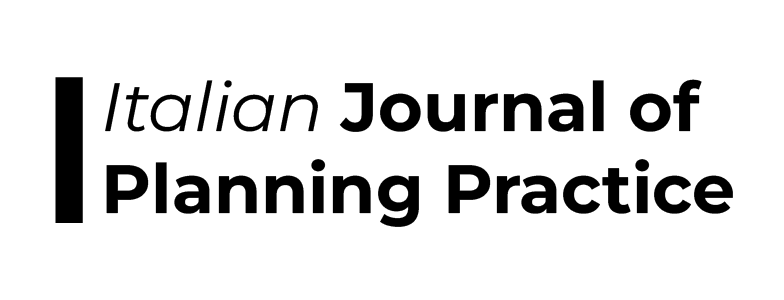AUTHOR GUIDELINES
The Editors welcome submission of papers from academics, practitioners, professionals and PhD students that are relevant to the aims of the journal. Contributions should be intended for an international readership and realized in a form which is significant for academics, professionals and planning officers. They should be analytical and critical rather than merely descriptive and theoretical concepts, where present, should be expressed clearly. Case studies of practice, critical comments of the activity of planning authorities, book reviews, analysis of planning legislation and policies are welcome.
The Journal does not have neither article processing charges (APCs), nor article submission charges (ASCs).
1. Article word count and English language
Articles should not exceed 8000 words including references and any tables you may wish to include.
Firstly, a review of proficiency in the use of English academic writing is carried out. Articles which do not comply with this requirement are sent back to the author for changes to be made rigorously within a two-week time. Secondly, once the paper has been accepted on this basis, the article is submitted to the selected reviewers for the double-blind peer review process which would take ideally no longer than eight weeks. Paper may be either accepted, rejected or accepted under certain conditions as stated by the reviewers.
2. Submission
Paper submission is accepted solely through electronic format attached to an email addressed to the editors and the IJPP Editorial Team at ijpp.dicam@unitn.it.
The first page should include the Title of the article and an Abstract of max 200 words. Authors must make sure that the names, affiliation and contact details are provided clearly and in case of articles with multiple authors they must indicate the corresponding author.
The authors must submit two files: one with a title page and author details and one anonymized where all authors information has been removed.
Contributions are accepted for review on the basis that they have not been published elsewhere.
After submission and a successfully completed review process the article will be published in the pre-print section right away and later in the first available issue.
3. Format
Please make sure that the title accurately describes the content of the article. Use a sub-heading if you wish. Use a 12-point Times New Roman font for the main text.
Try to limit the use of footnotes where strictly necessary but generally try to make the point within the main text. Use footnotes not endnotes.
Please proof read your paper thoroughly before submission.
Papers in any other language than English will not be accepted.
The journal is published in A4 paper format.
4. Referencing
Generally, we expect papers to be properly referenced following the information provided below.
Check your paper to ensure that every citation is included in the reference list at the end of the article. Also make sure that the reference list does not contain references not cited in the paper.
Exception applies to author self citation as described in the following section.
4.1 Referencing system – Please use the American Psychological Association (APA) referencing system. Examples can be found at: http://www.bibme.org/citation-guide/apa/
In-text citations should give the surname of the author and the year of publication in brackets (Baron, 2008) or Boughton (2002). Where you cite authors with publications on the same year distinguish these by adding ‘a’, ‘b’, etc. to the date, e.g. 2003a and 2003b. Please ensure that for every quotation page number is provided. Self-citations should be presented as “Author” and year of publication, e.g. Author (2000).
4.2 List of references – References should be listed in alphabetical order at the end of the paper within the references list. Provide DOIs where available. For example:
- Boyer, E.L. (1990). Scholarship reconsidered. Priorities of the Professoriate. Menlo Park, CA: The Carnegie Foundation for the Advancement of Teaching.
- Goldstein, H.A., & Carmin, J.A. (2006) Compact, Diffuse, or Would-be Discipline?: Assessing Cohesion in Planning Scholarship, 1963-2002. Journal of Planning Education and Research, 26(1), 66-79. Doi: 10.1177/0739456X05282353.
- Mazza, L. (2002) Technical Knowledge and Planning Actions. Planning Theory, 1(1), 11-26. Doi: 10.1177/147309520200100102.
Title of journals should not be abbreviated.
5. Illustrations
Ensure that illustrations, figures and photographs are of good quality. They should be put separately from the main text.
All illustrations, figures and tables need a caption. They should be numbered 1, 2, 3, etc. and should be referred to in the text. They should be submitted in any of the commonly used electronic formats (jpg, gif, tiff, pdf, etc.).
6. Download IJPP Article Template
COPYRIGHT NOTICE
The authors will hold the copyright and the publishing rights of their published articles in IJPP.
PRIVACY STATEMENT
The names and email addresses entered in this journal site will be used exclusively for the stated purposes of this journal and will not be made available for any other purpose or to any other party.
